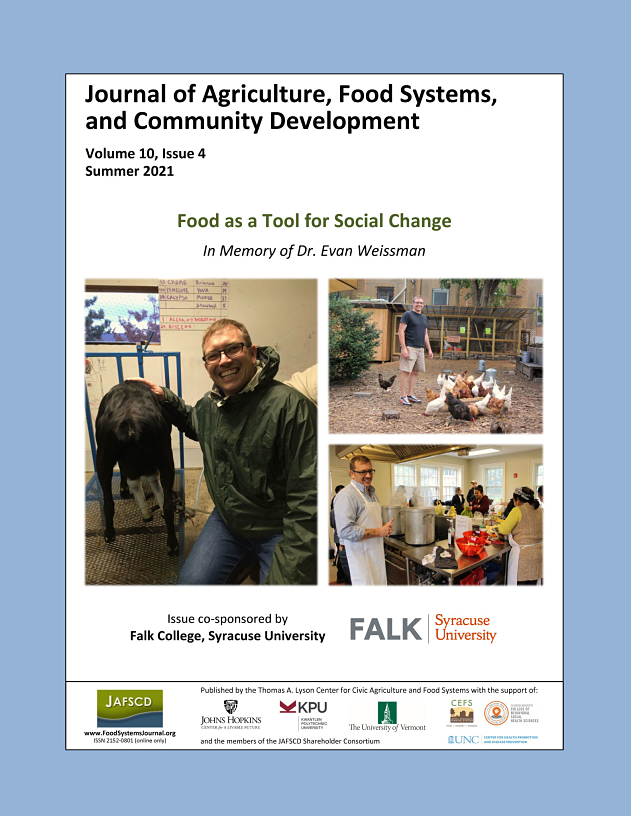What do farmers bring to market?
Exploring good types, number of vendors, and founding dates by SES and race/ethnicity
DOI:
https://doi.org/10.5304/jafscd.2021.104.002
Keywords:
Farmers Markets, Race and Ethnicity, Socio-Economic Status, Inequality, Food AccessAbstract
Farmers markets have been promoted as an avenue to improve access to food in neighborhoods that have been traditionally underserved by other outlets. Residents of these neighborhoods are encouraged to attend market sessions because the foods available are thought to increase access to foods that are healthier and of more variety. While previous studies have shown that farmers markets are choosing to locate in underserved areas, little research has examined how often this is occurring and what these markets offer to customers. Using survey data from 560 farmers markets across nine U.S. states and demographic data from the American Community Survey, this analysis contributes to this understanding by comparing and contrasting the founding years, number of vendors, and types of goods available at markets by neighborhood socio-economic status and racial/ethnic composition. Results show a more recent growth of farmers markets in low-income neighborhoods when compared to more affluent neighborhoods and a relative similarity of growth when looking at racial and ethnic composition. However, the types of goods available and number of vendors are significantly lower in low socio-economic status and high racial and ethnic minority neighborhoods when compared to more affluent and whiter neighborhoods. This suggests that there is continued and increasing farmers market presence in areas traditionally underrepresented, but that there is more work to be done to increase the number of vendors present and the diversity of offerings at these markets.
Metrics
Downloads
Published
How to Cite
Issue
Section
License
Copyright (c) 2021 The Authors

This work is licensed under a Creative Commons Attribution 4.0 International License.
The copyright to all content published in JAFSCD belongs to the author(s). It is licensed as CC BY 4.0. This license determines how you may reprint, copy, distribute, or otherwise share JAFSCD content.












